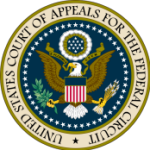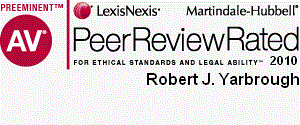Newsletter Issue 69 - November 2014
In this issue:
Copyright and free speech
Sirius XM loses
Internet business methods RIP
Ask Dr. Copyright ...
Dear Doc:
Can you explain what's protected by copyright when a newspaper or
television or radio station reports facts about the news? How can we
expect the news to be balanced and fair unless certain broadcasters
get to own some of the facts that they investigate and report? After
all, running a network costs money!
Signed,
Benjamin Gazzie
Dear Ben:
The Doc fully understands your concern. It must cost a lot to
produce all of those fancy graphics that tell viewers that the world
is ending and that the President is a communist! Seems like the you
should have a copyright to protect your investment, and that others
shouldn't be able to use it without your permission, doesn't it?
There has always been a tension between copyright and the First
Amendment when it comes to news. On the one hand, it costs money to
gather and report the news, even though it's just a bunch of facts
(or, at least we hope that what you broadcast contains at least some
facts.) On the other hand, copyright protects creative expression,
and has never legally protected facts, which are free for anyone to
reproduce. That's why things like telephone directories and vote
totals are not copyrightable under US law. To try to walk a thin
line between these two principles, courts came up with the "Hot
News" doctrine. Under that approach, used mostly in New York, news,
even factual news, was protected (but not by federal copyright) from
poaching for a short time while it was "hot" or "fresh" because
courts recognized that it took effort (they called it "sweat of the
brow") to gather and publish the news quickly ("Extree, Extree! Read
All About It!).
In September, Fox News Network (you've heard of them?) sued a
company called TVEyes for copyright infringement. TVEyes records
more than 1,400 television and radio stations, 24/7, and using
computers, provides a searchable database of every word that is said
on-air. They also provide more than 2,200 subscribers (including the
White House, members of Congress, media companies, financial
companies, trade associations and others) with clips, transcripts,
and analysis. Subscribers have to agree not to rebroadcast anything
they get from TVEyes. Fox News claimed that recording by TVEyes
infringed Fox's copyright, and they wanted an injunction to stop
TVEyes. TVEyes responded by saying that what they are doing is "fair
use" under §107 of the Copyright Statute.
The Court explained that TVEyes' use of Fox content was
"transformative" in nature, because the searchable database changed
that way in which the material could be located, tracked and used.
The Court noted that use for criticism, comment, and news reporting
provides a strong indication that the use is fair, and thus, not an
infringement of copyright. The Court then went on to discuss the
four factors that the Copyright Law provides for analysis of whether
a use is fair. In a 32 page decision the Court found that TVEyes
indexing and clipping services were a fair use, but allowed the use
of certain search functions to remain alive in the case (search by
time/date, for instance.)
The Court also addressed the "Hot News" claim. The judge noted that
one of the elements of this claim is that the alleged copier of the
hot news must try to pass that news off as his own. Here, TVEyes
specifically shows that the news comes from each of the 1,400 media
outlets that it monitors, including Fox News. The Court then found
that the Hot News claim was "preempted" by the federal Copyright
Statute (that is, the federal law makes equivalent state law claims
inoperative.)
So Ben, the case goes on in some small way, but for the big issues,
it's effectively over. TVEyes use is fair. The interests have been
balanced. And all the news that fits, LW&H prints. If you'd like to
know if your use of someone else's content is fair, call the
attorneys at LW&H. When it comes to fair use, they're the fairest in
the land.
The "Doc"
SiriusXM Cries "It Ain't Me Babe" but Loses its Bid to Broadcast
Royalty Free
Pre-1972 Recordings 
Do you remember the Turtles? They were the originators of such
memorable hits as "Happy Together," "It Ain't Me Babe," and "She'd
Rather Be with Me." The band was formed in 1965 and by 1970 was on
the decline.
You may think that when the Turtle's hits were recorded they were
protected by U.S. copyright law from unauthorized performances. You
may not know, however, that copyright law did not protect sound
recordings until 1972 at which time Congress provided federal
copyright protection for sound recordings made only after February
15, 1972. Keep in mind we're talking about the recordings not the
music and lyrics, which still enjoy copyright protection. As you
can imagine, the body of sound recordings in the pre-1972 era is
vast and radio companies such as SiriusXM, relying on U.S. Copyright
law, broadcast these recordings royalty free.
According to one
report, SiriusXM transmits thousands of pre-1972 recordings on a
daily basis.
So, Instead of broadening copyright law, Congress left it up to the
states to protect earlier sound recordings, a strategy that was
blessed by the U.S. Supreme Court in the 1973 case of
Goldstein vs
California. In Goldstein, in which petitioners were charged with
the unauthorized duplication of recordings of performances made
during the pre-protection era, the Supreme Court held that state
statutes, in particular those of California, which sought to protect
pre-1972 sound recordings, were constitutional and did not impinge
upon the federal authority to regulate copyrights.
Now back to the Turtles. Representatives of the band, Flow & Eddie,
have filed class action suits against SiriusXM for infringing their
state rights by playing Turtles sound recordings over the air. They
rely on state law claims for misappropriation, unfair competition,
conversion and other causes of action. Flow & Eddie filed similar
claims in California, New York State and Florida. In September, a
federal judge in California found SiriusXM liable for infringement
under California state law, which SiriusXM intends to appeal. Most
recently, on November 14th, the U.S. District Court for the Southern
District of New York denied SiriusXM's motion for summary judgment
of non-infringement on grounds that The Turtles have performing
rights to their pre-1972 recordings under New York state law.
Clearly, these cases demonstrate a trend in the law, which will
protect pre-1972 sound recordings, perhaps, engender more state
legislation in this area, and will undoubtedly increase the cost of
a SiriusXM subscription.
(Turtle image: 'baby turtle hiding in its shell' by FotoDawg. Licensed under Creative Commons
Attribution)
Drip, Drip, Drip...
The Internet-enabled business method patent just clutched its
chest and fell over dead.
The cause of its demise is the Ultramercial v Hulu (Fed. Cir. 2014)
case in the Court of Appeals for the Federal Circuit. The
Ultramercial patents address a typical Internet-enabled business
method. Under the patents, a consumer agrees to view an
advertisement and then is allowed to see or hear copyrighted text,
audio or video for free over the Internet. The provider tracks the
number of times the advertisement is displayed and receives payment
from the advertiser.
Bah, you say - how could that invention ever be considered
patentable? Well you might ask, but this is the third time that the
Federal Circuit Court has considered the same case. In the first
two iterations, the Federal Circuit found the Internet-enabled
invention to be patentable subject matter. Both prior cases were
reversed by the Supreme Court and sent back for further
consideration. This time, the Federal Circuit bowed to the
inevitable and followed the Supreme Court's decision in Alice v CLS
Bank and determined that the invention is abstract (and hence not
patentable on its face) and that none of the technological steps in
implementing the invention 'transformed' the non-patentable abstract
idea into a patentable invention.
The patent owner argued that the Internet-based advertising system
was patentable subject matter because it was new - no one had ever
delivered content in this manner before. You, astute reader, are
squirming in your chair and pointing out that patentable subject
matter (controlled by §101 of the patent statute) is a completely
different issue from whether an invention is new; that is, whether
the invention is 'novel' under §102 of the statute or 'obvious'
under §103. You are correct; however, we may forgive the patent
owner on this point. The Supreme Court, in its usual ham-fisted
approach to patents, blended patentable subject matter, novelty and
obviousness in its recent decisions, finding that inventions were
not patentable subject matter apparently because they were not new.
The Federal Circuit in Ultramercial considered that novelty was a
factor to be considered, but did not convert the abstract idea into
a patentable invention.
A concurring opinion by Judge Mayer would go further. He believes
that the Supreme Court has imposed a 'technological arts' test for
patentable subject matter. He would exclude 'entrepreneurial'
inventions directed to business, law and the social sciences.
The bottom line: don't count on patent protection for that
Internet-enabled business idea that you're eager to launch.
Stay tuned.

